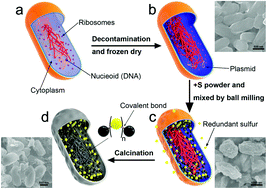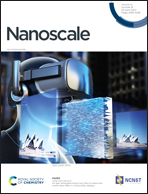Covalent sulfur embedding in inherent N,P co-doped biological carbon for ultrastable and high rate lithium–sulfur batteries†
Abstract
Lithium–sulfur (Li–S) batteries are attracting extensive interest owing to their low cost and potential for applications in high-density energy storage systems. However, their widespread application is severely plagued by poor cycling stability, inferior rate capability and low coulombic efficiency, which are largely attributed to the shuttling effect of soluble polysulfides. Herein, we report an architecture of an N,P co-doped biological carbon-based covalent sulfur composite (NP@BCCSC), which acts as a cathode for highly robust Li–S batteries. The NP@BCCSC can not only buffer the volume expansion of sulfur during the charge/discharge process, but also shows strong absorption towards soluble polysulfides, which can effectively suppress the shuttling effect. As a cathode for Li–S batteries, the NP@BCCSC with a sulfur content of 20.1% exhibits a reversible capacity of 1190 mA h g−1 (all specific capacities are calculated based on the mass of sulfur) at a current density of 500 mA g−1 after 500 cycles with an average coulombic efficiency of approximately 100%. Moreover, the NP@BCCSC offers a highly robust cycling stability (an ultralow capacity fading rate of 0.0024% per cycle during 15 000 consecutive cycles) and an excellent rate capability (high specific capacity of 920 mA h g−1 even at a current density of 10 000 mA g−1), indicating its great potential for applications in future energy storage systems.



 Please wait while we load your content...
Please wait while we load your content...